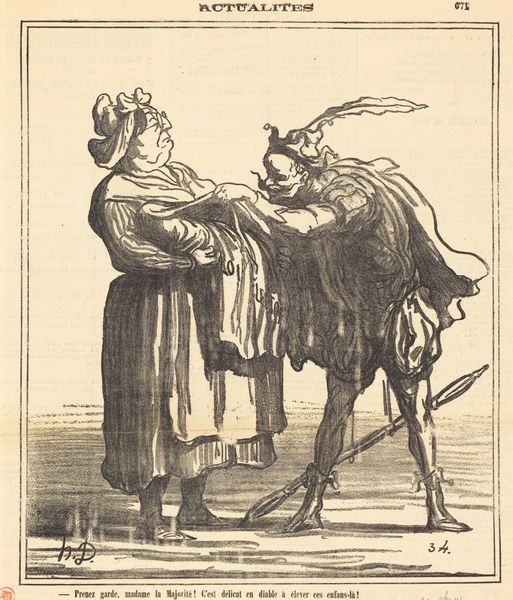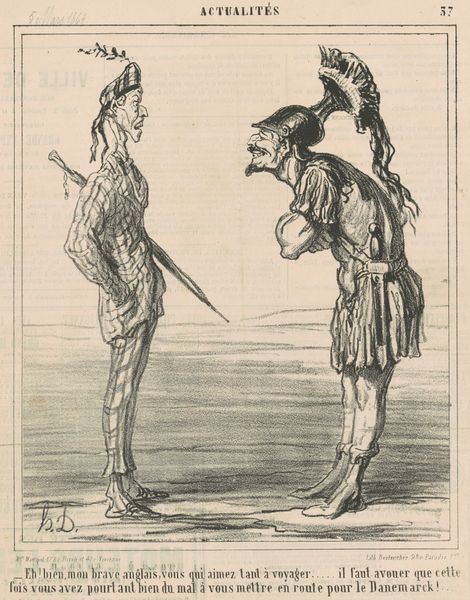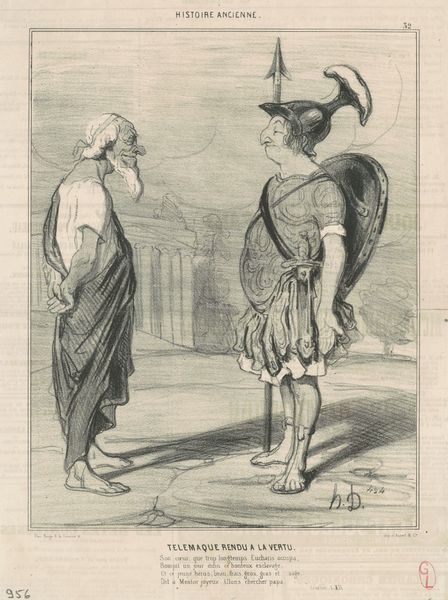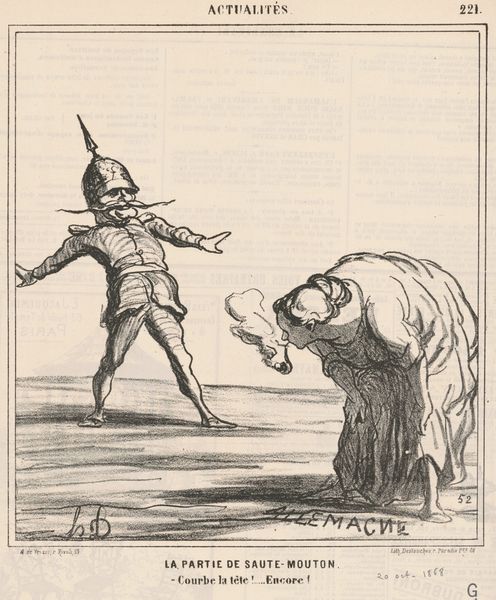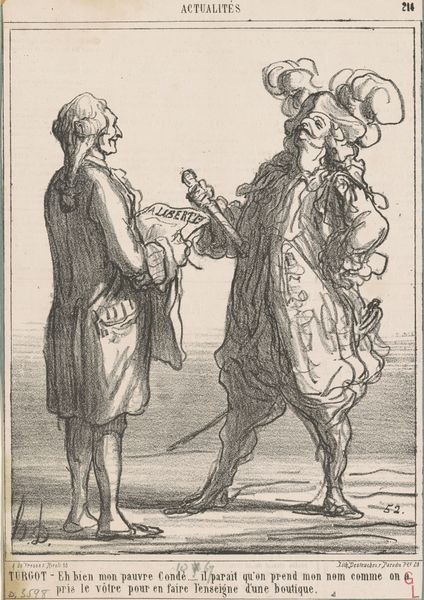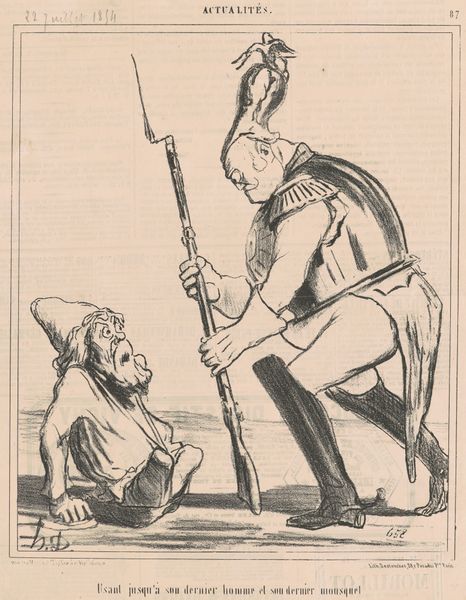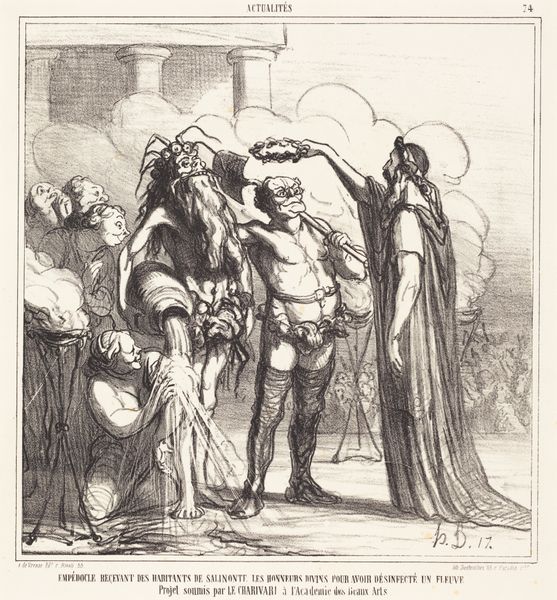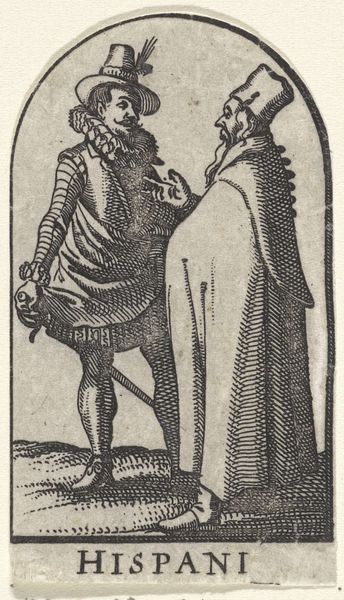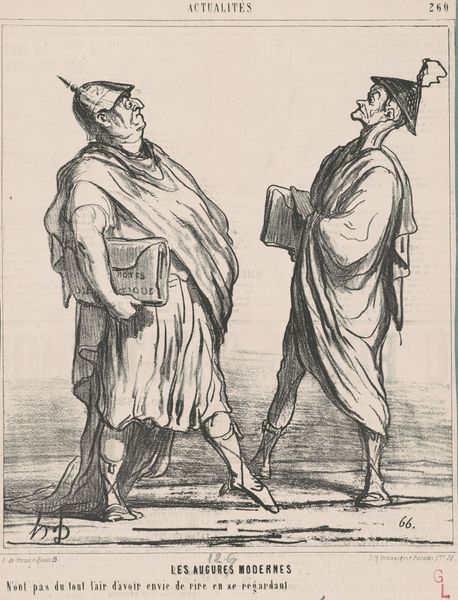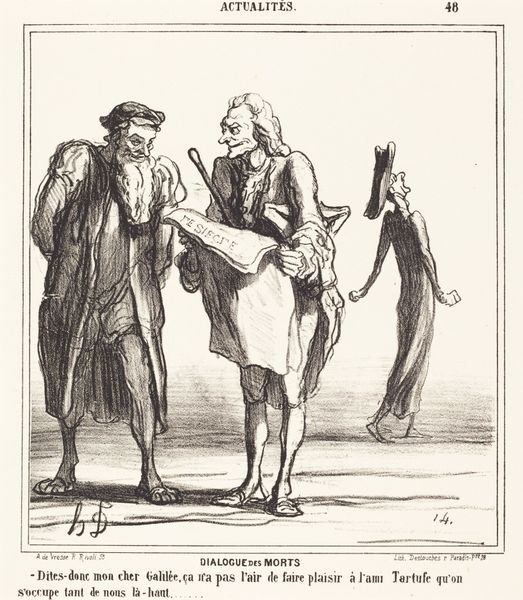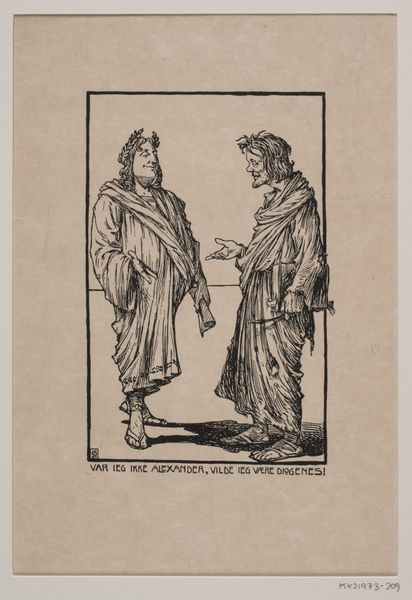
drawing, lithograph, print, ink
#
drawing
#
16_19th-century
#
lithograph
# print
#
caricature
#
figuration
#
ink
#
history-painting
Copyright: National Gallery of Art: CC0 1.0
Editor: So, this is Honoré Daumier's lithograph "Chère dame, avant de nous donner…", from 1871. The ink strokes are so expressive, they feel almost violent, which creates a really unsettling atmosphere. What do you see in this piece, and how do you think it connects to the historical moment? Curator: Well, consider the jester figure, adorned in motley, addressing a woman draped in a cloak bearing the inscription "REACTION". Here, Daumier isn't just drawing figures, but encapsulating an emotional landscape. Notice how the jester offers a rod or staff - it isn’t necessarily a weapon, yet possesses authority. How do you think that object influences your perception of the jester’s intent? Editor: I think it makes him seem more like a puppet master or perhaps, an agent of control, not just a comic figure. And "REACTION" inscribed on the woman’s cloak – so she symbolizes political regression? Curator: Exactly! The imagery suggests that the supposed buffoon holds real power over the forces of backwardness and suppression. Do you notice how the print appeared just after the Franco-Prussian War and the Paris Commune? Editor: Ah, right! A moment of intense political instability. The image is a stinging critique of conservative forces regaining power after the Commune. Curator: Precisely. Daumier’s skillful use of caricature and symbolism creates a powerful visual statement. Think about the enduring relevance of the image. Can you imagine its sentiments reflected in modern political satire? Editor: I can definitely see how his approach speaks to power dynamics in any era. It’s thought-provoking how the symbols he employed carry these strong meanings across time. Thanks for pointing that out! Curator: It's the enduring power of symbolic language to echo across generations, revealing continuities in the human story.
Comments
No comments
Be the first to comment and join the conversation on the ultimate creative platform.
